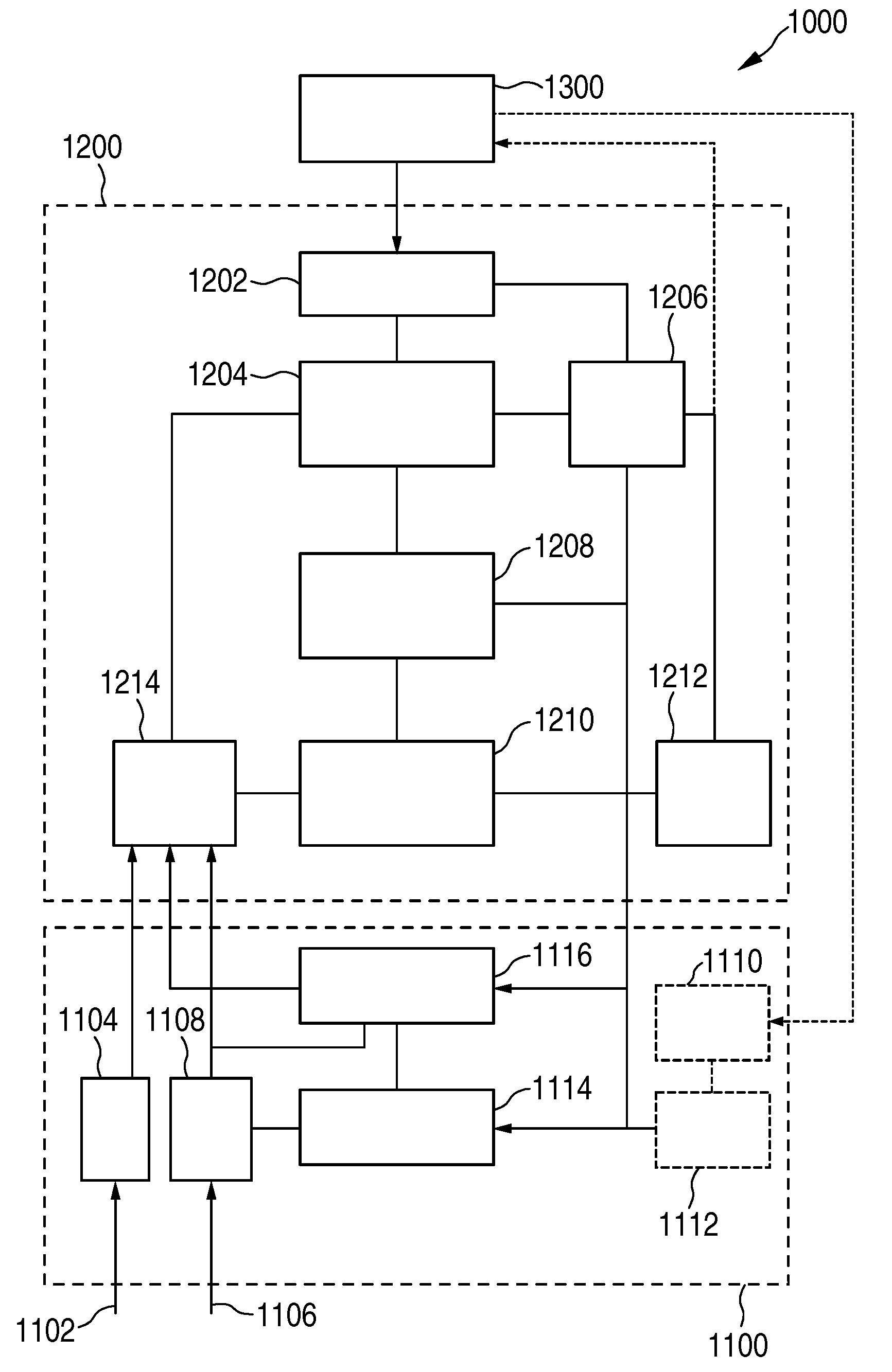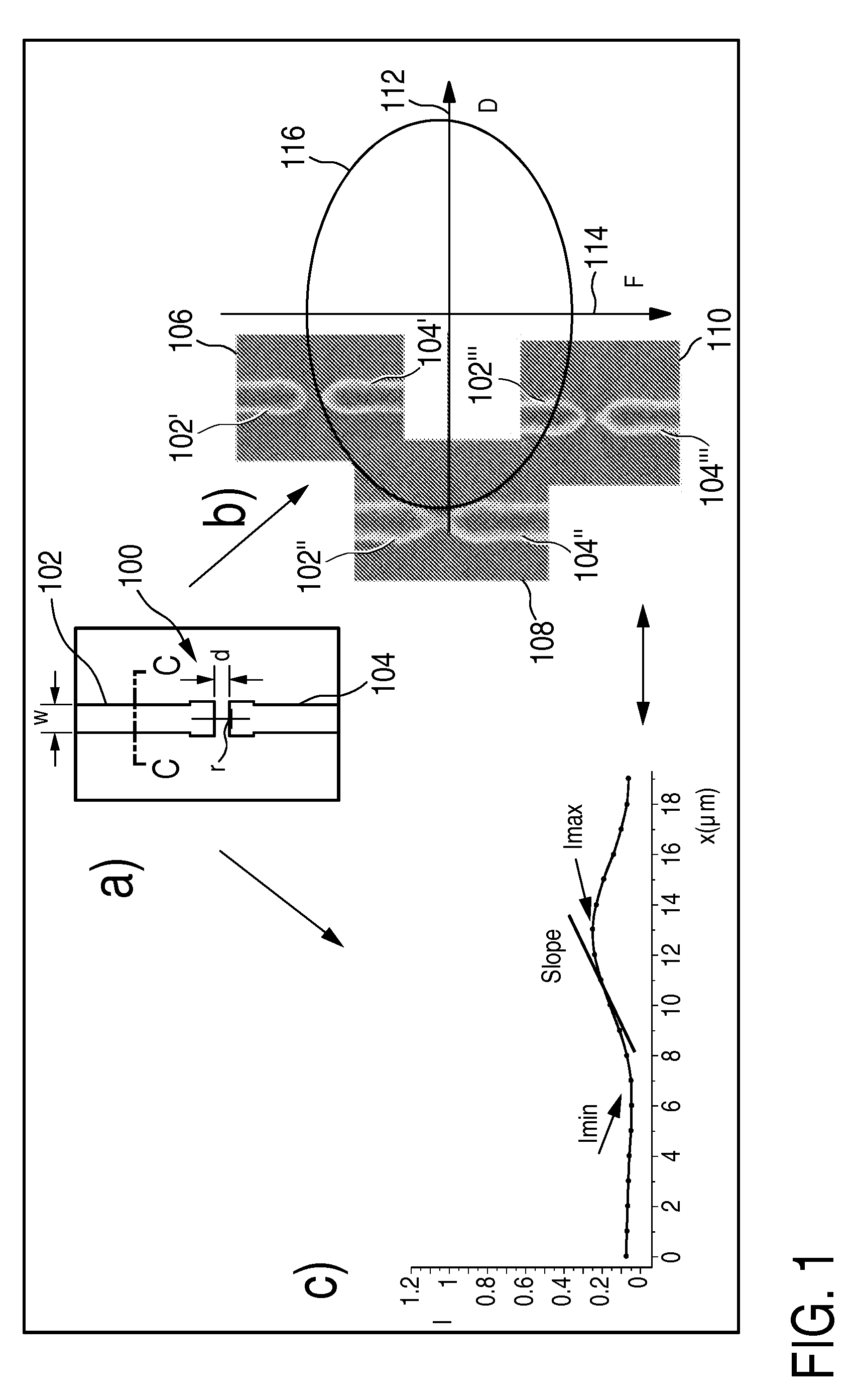Process-window aware detection and correction of lithographic printing issues at mask level
a technology of lithographic printing and masks, applied in the field of process window aware detection and correction of lithographic printing issues at mask level, can solve the problems of critical failure models, subject to undesired bridging, etc., and achieve the effects of high precision, high precision, and easy handling
- Summary
- Abstract
- Description
- Claims
- Application Information
AI Technical Summary
Benefits of technology
Problems solved by technology
Method used
Image
Examples
Embodiment Construction
[0087]FIG. 1 shows an illustration of a critical feature in FIG. 1a), different prints of the critical feature at different respective process conditions within a process window in a schematic diagram in FIG. 1b), and an intensity contour along a line c-c in FIG. 1a) in a print of the critical feature, for illustration of an optical-parameter set. FIG. 1 serves to illustrate the technical context of the invention and certain terms used in the present application.
[0088]FIG. 1a) represents, by way of an illustrative example, a critical feature 100 in a physical layout of a print pattern. The critical feature in this example is formed by two line segments 102 and 104 of a material, for instance silicon, which are to be deposited on a substrate, for instance a silicon wafer by means of a photolithographic technique. Both line segments have a width w, which is slightly increased towards the respective line-segment end in comparison with other sections of the line segment. The line-segmen...
PUM
 Login to View More
Login to View More Abstract
Description
Claims
Application Information
 Login to View More
Login to View More - R&D
- Intellectual Property
- Life Sciences
- Materials
- Tech Scout
- Unparalleled Data Quality
- Higher Quality Content
- 60% Fewer Hallucinations
Browse by: Latest US Patents, China's latest patents, Technical Efficacy Thesaurus, Application Domain, Technology Topic, Popular Technical Reports.
© 2025 PatSnap. All rights reserved.Legal|Privacy policy|Modern Slavery Act Transparency Statement|Sitemap|About US| Contact US: help@patsnap.com



